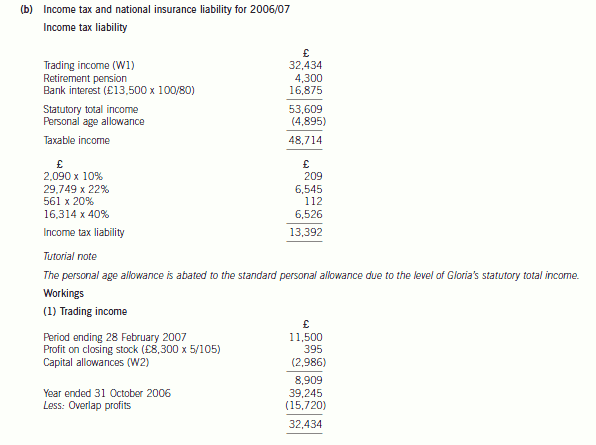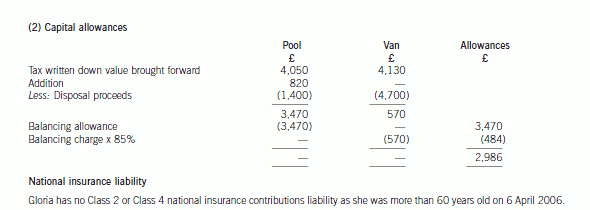信息!关于ACCA和CPA有哪些区别呢?来了解下!
发布时间:2020-05-15
对于多数人在报考ACCA,那么有谁知道ACCA与CPA的区别在哪里吗?那么接下来一起了解下吧!
关于ACCA被引进到中国,ACCA和CPA 的比较就一直没有停止过。一个是特许公认会计师,在国际享有很高的地位,认可雇主遍布全球。
一个是中国特有的注册会计师,在中国拥有其他财会证书不可比拟的签字权。
一、ACCA和CPA有什么区别?
ACCA是特许公认会计师公会,在我国被称为"国际注册会计师"是英国具有特许头衔的4家注册会计师协会之一,也是当今最知名的国际性会计师组织之一。
被称为"国际财会界的通行证"。作为国际注册会计师,ACCA在国际上备受欢迎,外企企业或者各大事务所对于ACCA会员也十分青睐,同时本科在校生也可以报考ACCA考试,还享有一定的免考政策。
而CPA是中国注册会计师,指的是从事社会审计/中介审计/独立审计的专业人士。是我国唯一官方认可的注册会计师资质。
CPA在国内是含金量最高的财会类证书,无论是国企,事务所还是证券等都十分受欢迎,作为国内唯一认可的拥有审计签字权的注册会计师证书,这一点毋容置疑。
但是在校大学生不可以报考CPA考试,应届毕业生可以报考,但考试难度大,学习期长。
二、先报考CPA再考ACCA有什么优势?
持有CPA证书,最高可免考ACCA考试F阶段9门考试,也就是说考完了CPA再考ACCA,只要考下P阶段5门考试即可。因ACCA考试对于CPA考试没有免考的权利,所以很多人选择先考CPA再考ACCA。
三、先考ACCA再考CPA有什么优势?1、报考优势因CPA考试是毕业之后或者应届毕业生才可以报考,而ACCA在大学期间就可以报考,相对来说是ACCA是有一定的报考优势的。
大学期间学习的效率相对较高,学习资源比较丰富,备考时间也相对充足,还可以和自己的专业课结合学习,而且ACCA是全英文考试,大学期间还有英文课程,英语水平也比较好,所以备考会更搞笑。
如果先考CPA再考ACCA,那么大学的时间就会浪费,及时在校期间学习CPA内容,等到考试的时候也还要在复习一轮。
对于免试优势ACCA考试科目虽然比较多,但是考试是阶梯式考试,由浅入深,导致很多人畏惧其考试科目。
但是ACCA考试是有一定的免试政策的,对很多会计专业的本科生来说,完成大二的课程就可以免试ACCA的其中3门考试。
即使是已经毕业的学生,满足一定的条件最高也可免试5门。3、求职优势对于即将毕业的大学生来说,校招季是最好的求职机会。
同样是零经验应届生,证书优势就尤为明显,如果能够有一份高含金量证书,那么拿下心仪offer的机会也就越大。
无论是先考CPA还是先考ACCA,都要从自身的实际情况出发,如果你已经毕业,想要在国内事务所发展,那么你可以先报考CPA。
但如果你是在校学生,想要在毕业后找一份好工作,那么就不要浪费你大学的时光了,着手准备ACCA备考事宜吧。
以上就是今天所要分享的内容,到这里就结束了,看完本篇内容是不是更加了解考试了,如果还有其他疑问,也可到帮考官网或者相关网站去搜索看看吧。
下面小编为大家准备了 ACCA考试 的相关考题,供大家学习参考。
(b) Compute Gloria’s total income tax and national insurance liability for 2006/07. (7 marks)


(b) As a newly-qualified Chartered Certified Accountant, you have been asked to write an ‘ethics column’ for a trainee
accountant magazine. In particular, you have been asked to draft guidance on the following questions addressed
to the magazine’s helpline:
(i) What gifts or hospitality are acceptable and when do they become an inducement? (5 marks)
Required:
For each of the three questions, explain the threats to objectivity that may arise and the safeguards that
should be available to manage them to an acceptable level.
NOTE: The mark allocation is shown against each of the three questions above.
(b) Draft guidance
(i) Gifts and hospitality
Gifts and hospitality may be offered as an inducement i.e. to unduly influence actions or decisions, encourage illegal or
dishonest behaviour or to obtain confidential information. An offer of gifts and/or hospitality from a client ordinarily gives
rise to threats to compliance with the fundamental principles, for example:
■ self-interest threats to objectivity and/or confidentiality may be created if a gift from a client is accepted;
■ intimidation threats to objectivity and/or confidentiality may arise through the possibility of such offers being made
public and damaging the reputation of the professional accountant (or close family member).
The significance of such threats will depend on the nature, value and intent behind the offer. There may be no significant
threat to compliance with the fundamental principles if a reasonable and informed third party would consider gifts and
hospitality to be clearly insignificant. For example, if the offer of gifts or hospitality is made in the normal course of
business without the specific intent to influence decision making or to obtain information.
If evaluated threats are other than clearly insignificant, safeguards should be considered and applied as necessary to
eliminate them or reduce them to an acceptable level.
Offers of gifts and hospitality should not be accepted if the threats cannot be eliminated or reduced to an acceptable
level through the application of safeguards.
As the real or apparent threats to compliance with the fundamental principles do not merely arise from acceptance of
an inducement but, sometimes, merely from the fact of the offer having been made, additional safeguards should be
adopted. For example:
■ immediately informing higher levels of management or those charged with governance that an inducement has
been offered;
■ informing third parties (e.g. a professional body) of the offer (after seeking legal advice);
■ advising immediate or close family members of relevant threats and safeguards where they are potentially in
positions that might result in offers of inducements (e.g. as a result of their employment situation); and
■ informing higher levels of management or those charged with governance where immediate or close family
members are employed by competitors or potential suppliers of that organisation.
Roy Crawford has argued for a reduction in both the product range and customer base to improve company
performance.
(b) Assess the operational advantages and disadvantages to Bonar Paint of choosing such a strategy.
(15 marks)
(b) Divestment of products or parts of the business is one of the most difficult strategic decisions. As apparent in Bonar Paint a
reduction in the products and customers served by the firm is likely to cause significant changes to the firm’s value chain and
system. Currently Bonar Paint supplies its customers, regardless of size, directly and this inevitably means that their
distribution costs are increased. The reduction in products and customers may allow a choice to be made about the costs of
supplying customers directly as against using distributors to handle the smaller customers.
In using the value chain one is looking to identify the significant cost activities and how those costs behave. Some costs may
be affected by the overall size of the firm e.g. advertising while others affected by the batch size being processed. The changeto fewer products will lead to a bigger batch size and a number of positive consequences for costs. The value chain’s major
benefit is in identifying and quantifying the links that exist between various activities within the firm and between the firm
and its customers and suppliers. In Bonar Paint’s case does a reduction in product range lead to less product failures and
consequent warranty claims? Does simplifying the product range lead to shorter lead times and better delivery time
performance for its customers? Above all, a good understanding of its value chain will let it know if it changes an activity what
are the consequences for other parts of the system.
In terms of reducing the product range, before such a decision is taken Bonar Paint must carry out a thorough analysis of the
pattern of customer demand for each paint type. In all probability it will find that 80% of its sales come from 20% of its
product range. Having given this qualification, reducing the product range can have a number of beneficial results on other
parts of the value chain. The immediate effect is likely to be that Bonar Paint produces fewer batches over a given time period
but produces them in larger quantities. This will bring cost savings but the impact on other parts of the value chain is equally
important. The beneficial effects are:
– With a smaller product range the control of raw materials and finished inventory will be simplified affecting inbound and
outbound logistics. This will improve the inventory turn and make for better product availability.
– With an improved inventory turn this will reduce the firm’s working capital needs and release significant amounts of
cash.
– A simpler operations process should facilitate staff savings and support more automation.
– Warranty claims and support costs could be reduced.
– Bonar Paint will be purchasing fewer raw materials but in greater volume and on a more regular basis. This will lead to
improved price and delivery terms from its suppliers.
– Bonar Paint can offer improved product reliability and better delivery to its customers and should improve its market
share.
In terms of operational disadvantages, these therefore are largely in terms of the impact on customer service levels seen in
terms of product range availability. Once again it is important to have accurate information on the sales and profitability of
each product so informed divestment decisions could be taken. Care must be taken to identify any paints, which though
ordered infrequently, and in small quantities are a pre-cursor for customers ordering other paints. Some important customers
may require that the full range of their paint needs are met in order to continue buying from Bonar Paint.
Reduction of the product range and customer base is an important strategic decision. Eliminating non-contributors or ‘dog’
products both in terms of paints and customers is a key part of managing the product portfolio. However, inertia both in terms
of products and customers is a real strategic weakness. In terms of the three tests of suitability, acceptability and feasibility
the analysis suggests that only acceptability is likely to be an issue. Tony Edmunds needs to be convinced that it is an
appropriate strategy to adopt. It is the lack of accurate sales analysis that lies at the heart of the problem and that is his areaof responsibility!
声明:本文内容由互联网用户自发贡献自行上传,本网站不拥有所有权,未作人工编辑处理,也不承担相关法律责任。如果您发现有涉嫌版权的内容,欢迎发送邮件至:contact@51tk.com 进行举报,并提供相关证据,工作人员会在5个工作日内联系你,一经查实,本站将立刻删除涉嫌侵权内容。
- 2020-05-14
- 2020-05-15
- 2020-05-01
- 2020-05-14
- 2020-03-18
- 2020-03-11
- 2019-07-19
- 2020-04-18
- 2020-01-14
- 2020-01-09
- 2019-12-29
- 2020-05-17
- 2020-05-14
- 2020-01-09
- 2020-01-09
- 2020-01-09
- 2020-01-03
- 2020-05-15
- 2020-01-09
- 2020-01-31
- 2020-01-09
- 2020-05-05
- 2020-02-27
- 2020-01-11
- 2020-05-11
- 2020-01-09
- 2020-02-12
- 2020-04-22
- 2020-01-09
- 2020-01-09